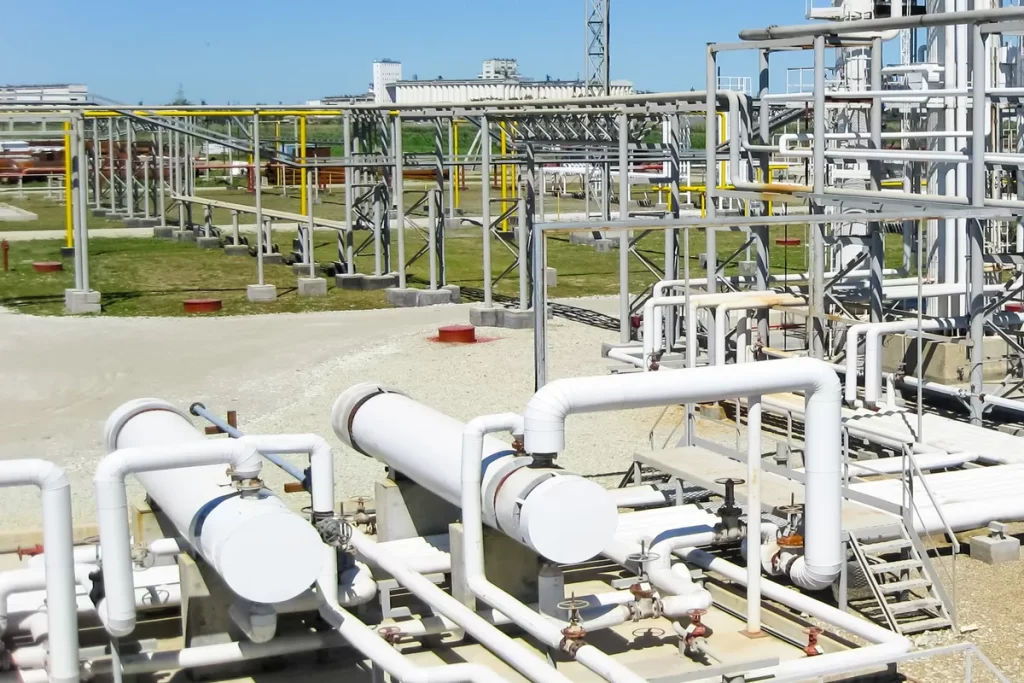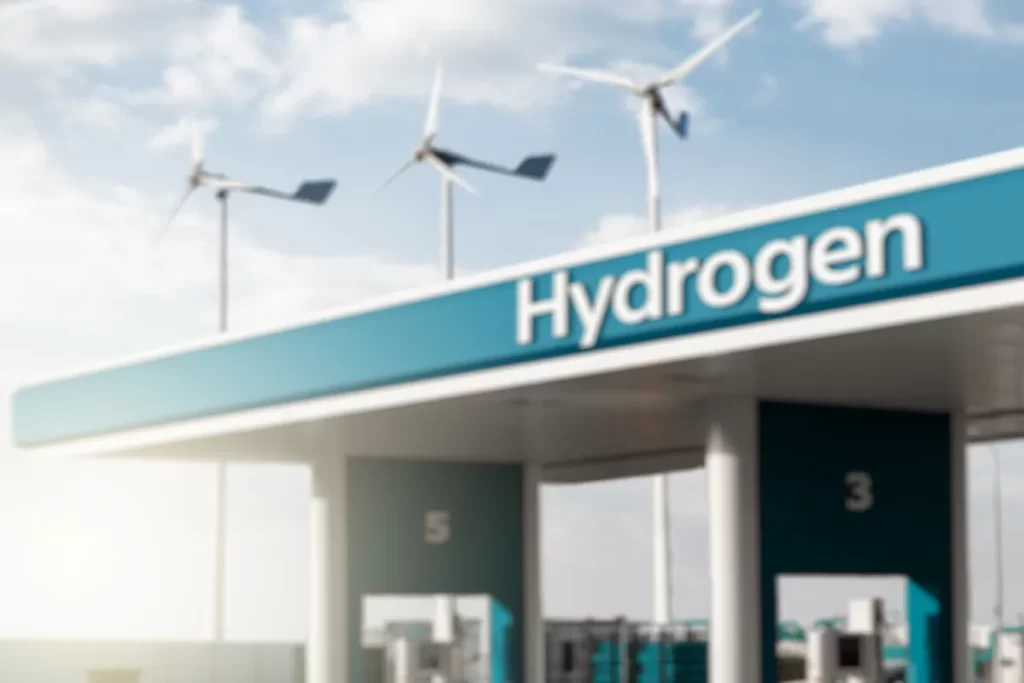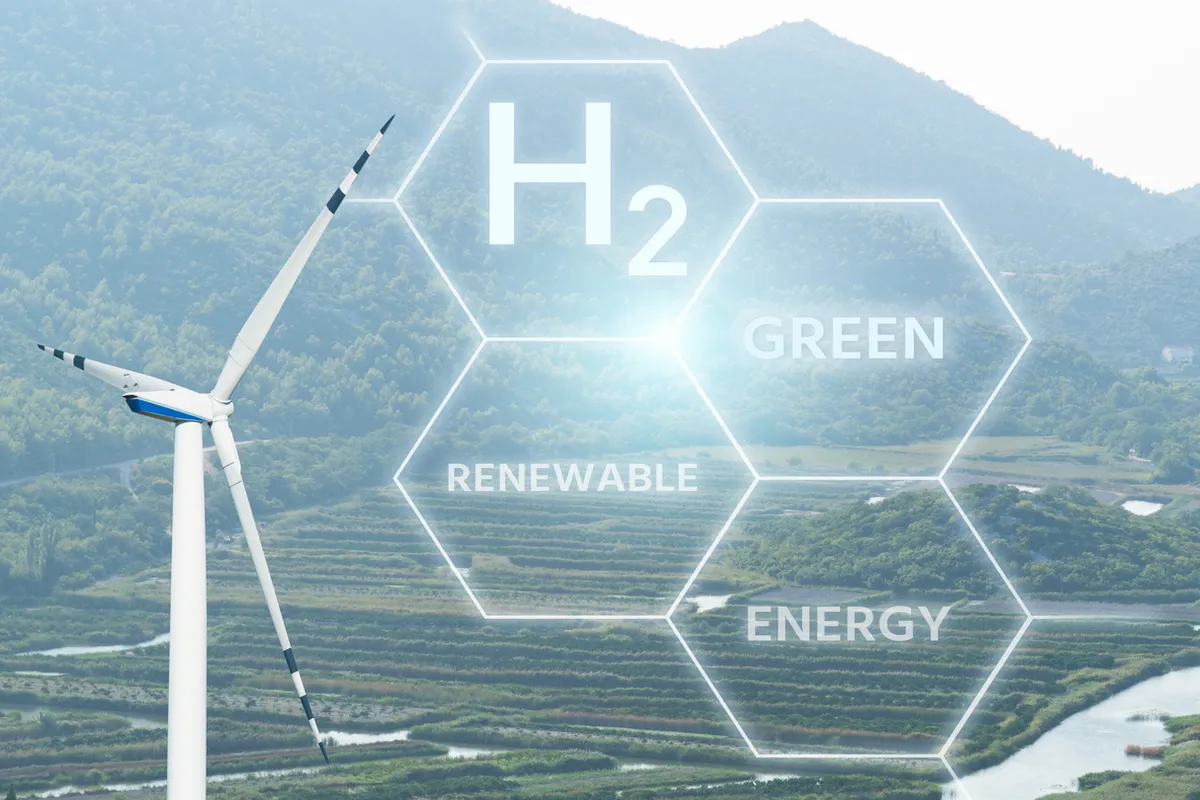As climate change continues to threaten our planet, the need for sustainable and efficient energy solutions has become more urgent than ever. Industries around the world are now racing to implement innovative ways to reduce their carbon footprint and contribute to a greener future. Enter green hydrogen, a powerful and versatile energy source poised to revolutionize the way we power our world. In this article, we’ll delve into the potential of green hydrogen to decarbonize various industries and explore real-world examples of its successful implementation.
Understanding Green Hydrogen
Green hydrogen, or hydrogen produced from renewable energy sources such as solar and wind, is a clean and environmentally friendly alternative to fossil fuels. Unlike its counterparts, grey and blue hydrogen, which are derived from natural gas and emit carbon dioxide during production, green hydrogen is created using electrolysis powered by renewables [1]. This process splits water into hydrogen and oxygen, resulting in zero greenhouse gas emissions. As green hydrogen technology advances, it is becoming increasingly cost-competitive, making it an attractive option for industries seeking to reduce their environmental impact.
A Game Changer for Carbon-Intensive Industries
Industries like steel, cement, chemical, and petrochemical production are some of the most significant contributors to global carbon emissions. These sectors have long been dependent on traditional, carbon-intensive processes, making their decarbonization challenging. Green hydrogen offers a promising solution by replacing fossil fuels in various processes and helping industries achieve their net-zero targets.
Steel and Cement Production
The traditional production methods for steel and cement are incredibly carbon-intensive. In steelmaking, coal is used to reduce iron ore, releasing significant amounts of CO2. Cement production, on the other hand, relies on the heating of limestone and other materials, also emitting large quantities of greenhouse gases. By implementing green hydrogen technologies, these industries can significantly reduce their carbon emissions. For instance, hydrogen can replace coal in steel production, creating a cleaner direct reduction process [2]. Similarly, green hydrogen can serve as an alternative fuel in cement kilns, contributing to a more sustainable production process.
Chemical and Petrochemical Industries
The chemical and petrochemical industries rely on fossil fuels to create various products, resulting in substantial greenhouse gas emissions. Green hydrogen has the potential to revolutionize these industries by providing a cleaner alternative for producing essential chemicals, such as ammonia and methanol [3]. Additionally, green hydrogen can serve as a building block for creating synthetic fuels, further reducing the industry’s carbon footprint.
Transportation and Logistics
Heavy-duty vehicles and shipping are essential components of the global economy but remain significant sources of emissions. Green hydrogen can play a crucial role in decarbonizing these sectors by providing an alternative fuel source. Hydrogen fuel cell vehicles generate electricity from hydrogen, with only water as a byproduct, making them an environmentally friendly option for heavy-duty transportation. Moreover, green hydrogen can be used to power ships, reducing the environmental impact of maritime transportation.

Real-World Examples of Green Hydrogen in Industry
Several pioneering companies have begun to adopt green hydrogen solutions in their operations, showcasing the feasibility and benefits of this clean energy source. For example, steel manufacturer SSAB has partnered with LKAB and Vattenfall to create HYBRIT, a project aiming to develop the world’s first fossil-free steel production using green hydrogen [4]. Meanwhile, Siemens Energy and Air Liquide are collaborating on the development of a large-scale green hydrogen production plant in France [5].
These early adopters have faced challenges, such as high upfront costs and limited infrastructure, but their efforts have led to valuable insights and innovations. Their success demonstrates that green hydrogen can be effectively integrated into industrial processes, and emphasizes the importance of collaboration and continued research.
The Economic Benefits of Green Hydrogen in Industry
The potential for job creation and economic growth
As industries shift towards green hydrogen adoption, new employment opportunities will arise in research and development, manufacturing, installation, and maintenance of hydrogen-related technologies. This transition can drive economic growth by creating jobs in the renewable energy sector and fostering innovation in clean technologies.
The role of hydrogen in fostering energy independence
Green hydrogen can reduce dependence on fossil fuels by providing a sustainable and domestically produced energy source. By decreasing reliance on imported fuels, countries can strengthen their energy security and create more stable and resilient economies.
Green hydrogen’s contribution to a circular economy
Green hydrogen can contribute to a circular economy by enabling industries to use renewable energy more efficiently and recycle waste materials. For instance, excess renewable electricity can be used to produce green hydrogen, which can be stored and utilized when needed. Additionally, green hydrogen can be used to convert industrial waste gases into valuable products, such as synthetic fuels and chemicals.

Policy and Infrastructure Considerations for Green Hydrogen Adoption
The need for supportive policies and incentives
Government policies and incentives play a crucial role in promoting green hydrogen adoption [6]. By providing financial support, tax incentives, and regulatory frameworks that favor green hydrogen, governments can stimulate investments and accelerate the transition to cleaner industrial processes.
Developing infrastructure for green hydrogen production, storage, and distribution
To facilitate the widespread adoption of green hydrogen, it is essential to invest in the necessary infrastructure [7]. This includes developing efficient electrolyzers for hydrogen production, creating storage solutions to accommodate fluctuating renewable energy generation, and establishing distribution networks to transport green hydrogen to end-users.
Encouraging public-private partnerships for green hydrogen projects
Public-private partnerships can foster collaboration between governments, industries, and research institutions, driving innovation and facilitating the implementation of green hydrogen solutions [8]. By pooling resources and expertise, stakeholders can overcome technical and financial challenges, accelerating the adoption of green hydrogen technologies.
The Future of Green Hydrogen in Industry
Long-term vision and goals for green hydrogen adoption
As industries and governments set ambitious targets for decarbonization, green hydrogen is poised to play a significant role in achieving these goals. The long-term vision for green hydrogen adoption includes scaling up production, reducing costs, and integrating hydrogen solutions across various sectors. By establishing clear roadmaps and strategies, industries can work collaboratively towards a hydrogen-powered future.
Addressing potential challenges and barriers to scaling up green hydrogen use
Scaling up green hydrogen use will require overcoming several challenges, including high production costs, limited infrastructure, and the need for efficient storage solutions. Industries, governments, and researchers must collaborate to develop innovative technologies, improve existing processes, and create economies of scale to make green hydrogen more cost-competitive and accessible.
The role of green hydrogen in building a sustainable, decarbonized future
Green hydrogen has the potential to transform the way we power our industries, contributing to a more sustainable, decarbonized future. By replacing carbon-intensive fuels and processes with green hydrogen, industries can significantly reduce their greenhouse gas emissions and mitigate the effects of climate change. As the world continues to prioritize sustainability and clean energy, green hydrogen will play a crucial role in shaping our global energy landscape.

